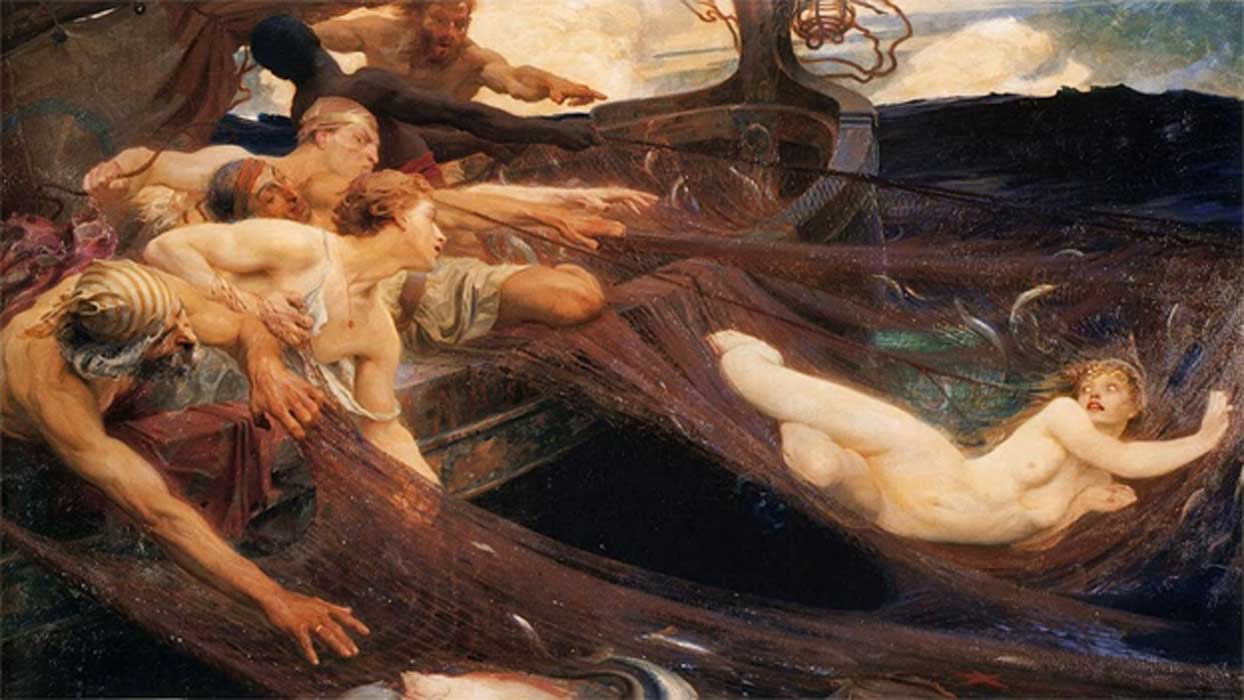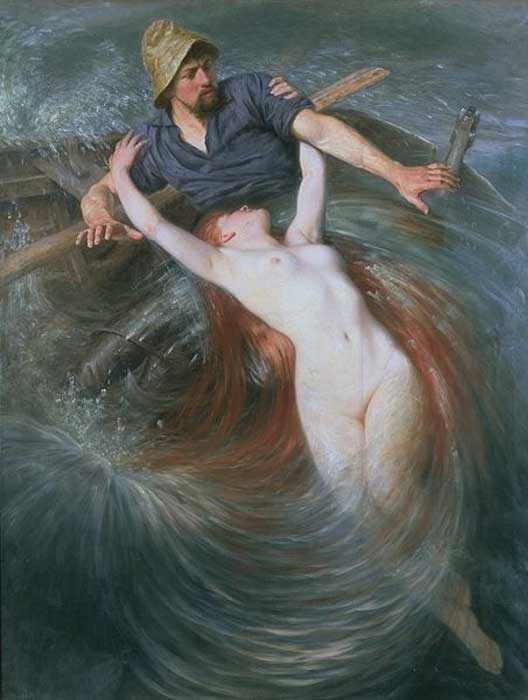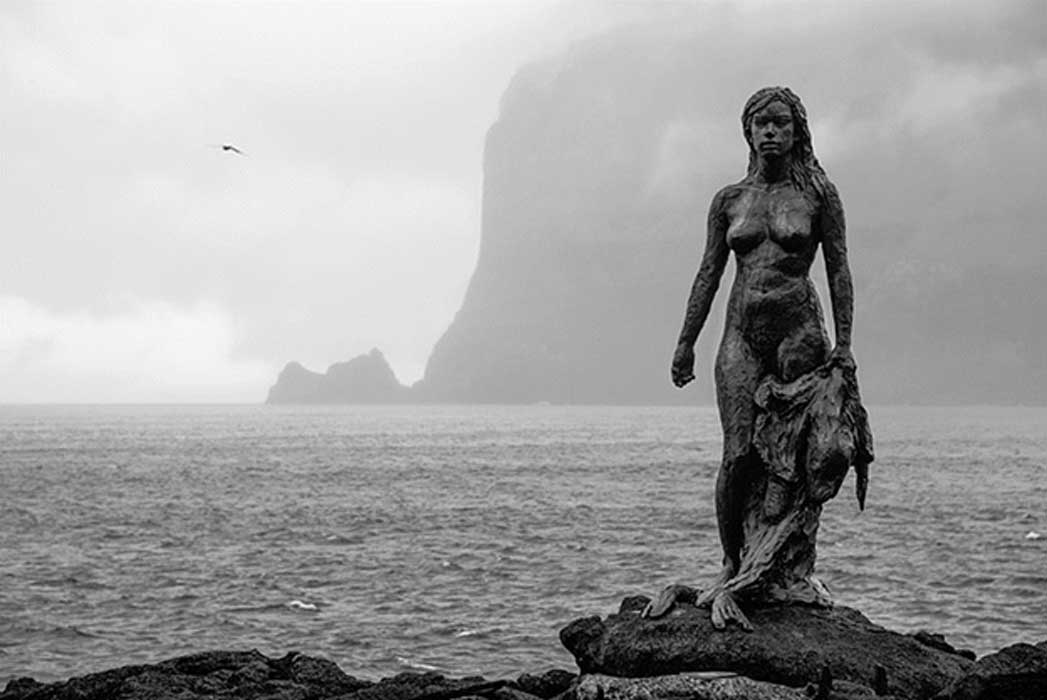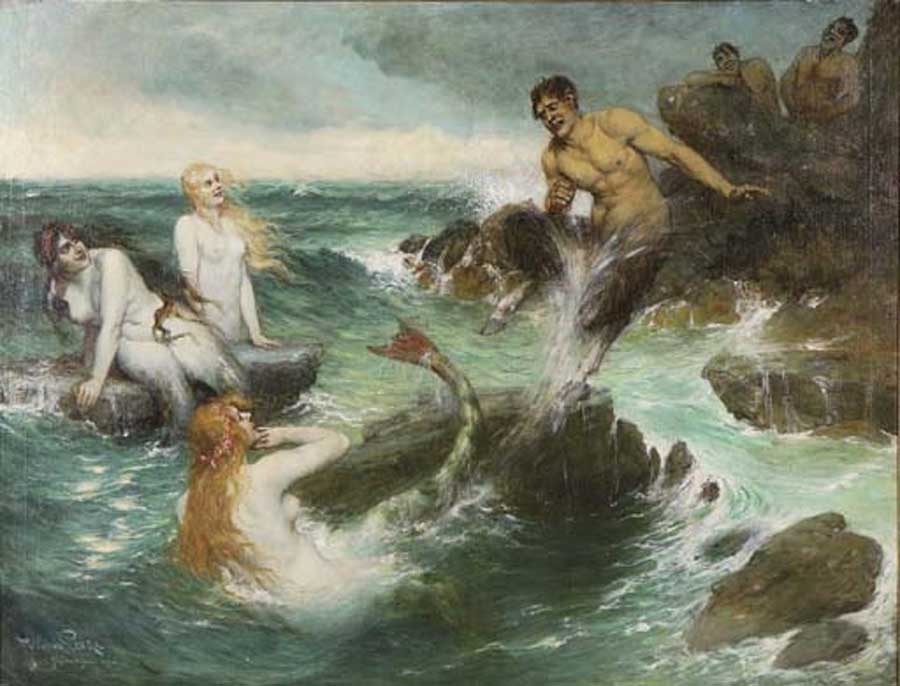
Selkies, Sirens, Swan Maidens and Otherworldly Brides
A common motif in British folklore is that of an otherworldly female, who is somehow captured or charmed by a mortal man to be his bride. The females are often therianthropes, that is shape-shifters, who seem to be part human and part animal, but their main attribute is always as an entity from a metaphysical otherworld, interacting with consensus reality in order to bridge the gap between the natural and the supernatural.

The Fishermen and the Siren by Knut Ekwall (1843–1912) (Public Domain)
These therianthropic females take many forms, such as Selkies (humanoids masquerading as seals), mermaids, and swan-maidens, and can also appear as magical women without any animal attributes, such as the lake faeries, but they are always found in bodies of water, a configuration that proves important in any attempt to interpret these folkloric motifs. The standard scheme of the stories is that the female is lured from her watery existence by a male, either through a ruse or by charm. They are married and will usually have children together. But at some point, a taboo is broken or the female is mistreated, and she deserts her husband to return to the water, which always seems to represent the portal between the physical world and a non-material reality.
- Legends of the Selkies, Hidden Gems of Sea Mythology
- Are tales of mythical mermaids inspired by a real-life medical condition?
- The Bizarre Tales of Four Lesser Known English Mermaids
As always with folklore, any deeply embedded motif such as this is designed to impart some timeless wisdom; allegorical, philosophical and psychological. The stories were always meant to be a good fireside yarn, but more importantly they were plugging into fundamental aspects of the human condition, as well as recording belief-systems that were disappearing into the past. The origins of these stories are usually medieval (although possibly even older), and sometimes appear in chronicles. But most were transmitted through an oral tradition and were not recorded in detail by folklorists until the 18th and 19th centuries.

The statue of the selkie, Kópakonan, in Mikladalur, Faroe. (CC BY-SA 2.O)
Selkies and Sea Maidens
The folklore of Selkies comes mostly from northern Scotland, especially the islands of Shetland, Orkney and Faroe, although the theme is also found in Ireland, Scandinavia and Iceland. The name is derived from Selch, the Scots for grey seal, a species that is commonly found around the coastlines of these northern European countries. The Selkie therianthrope can be male or female, but the majority of the folklore involves a female creature, such as the typical example from the Faroe Islands: The legend of Kópakonan (‘seal woman’). This tale tells of a fisherman (in some versions a farmer) from Mikladalur on the Faroese island of Kalsoy who, after taking the advice of an island elder, sets up a watch on the shoreline on the 13th day of the month to catch sight of the Selkies, who it was said could only beach on this day. Sure enough, he witnesses a group of the creatures come ashore and shed their seal-skins to reveal their female human forms. He steals one of the skins, and puts fright to the females, who all return to the sea in Selkie form. All except the one denuded of her skin. She is distraught but agrees to follow the fisherman back to his home, where she proceeds to become his wife, and they have children together. But she pines for the sea, and one day manages to find the key to the room where her husband has kept her Selkie skin. She skins up, shape shifts and returns to the sea. As with most Selkie folklore, the story has a grim denouement, when the fisherman (despite being warned not to in a dream) kills the Selkie husband of his estranged wife as well as their two sons. Kópakonan takes revenge by cursing the people of Kalsoy: "some shall be drowned, some shall fall from cliffs and slopes, and this shall continue, until so many men have been lost that they will be able to link arms around the whole island of Kalsoy.” A statue of Kópakonan was erected in Mikladalur in 2014, demonstrating the continuing importance of the folktale to the Faroese people.

The mermaids by Ferdinand Leeke (1859–1937) (Public Domain)




